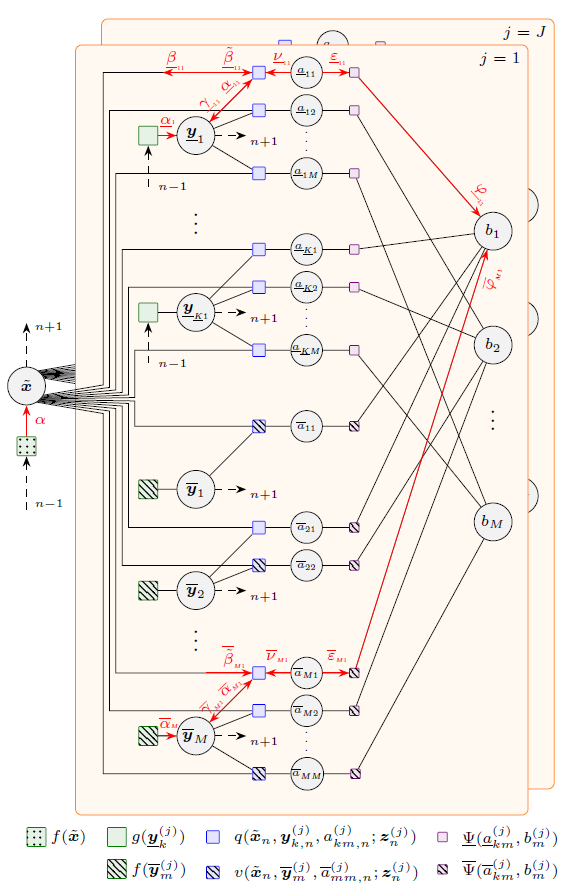Multipath-based SLAM for Non-Ideal Reflective Surfaces Exploiting Multiple-Measurement Data Association
- Published
- Sun, Oct 01, 2023
- Tags
- rotm
- Contact

Multipath-based simultaneous localization and mapping (SLAM) is a promising approach to obtain position information of transmitters and receivers as well as information regarding the propagation environments in future mobile communication systems. Usually, specular reflections of the radio signals occurring at flat surfaces are modeled by virtual anchors (VAs) that are mirror images of the physical anchors (PAs). In existing methods for multipath-based SLAM, each VA is assumed to generate only a single measurement. However, due to imperfections of the measurement equipment such as non-calibrated antennas or model mismatch due to roughness of the reflective surfaces, there are potentially multiple multipath components (MPCs) that are associated to one single VA. In this paper, we introduce a Bayesian particle-based sum-product algorithm (SPA) for multipath-based SLAM that can cope with multiplemeasurements being associated to a single VA. Furthermore, we introduce a novel statistical measurement model that is strongly related to the radio signal. It introduces additional dispersion parameters into the likelihood function to capture additional MPCs-related measurements. We demonstrate that the proposed SLAM method can robustly fuse multiple measurements per VA based on numerical simulations.
More information can be found in our paper
Figure: Factor graph for proposed algorithm. The time evolution of the agent state and VAs is indicated with dashed arrows.
Browse the Results of the Month archive.
